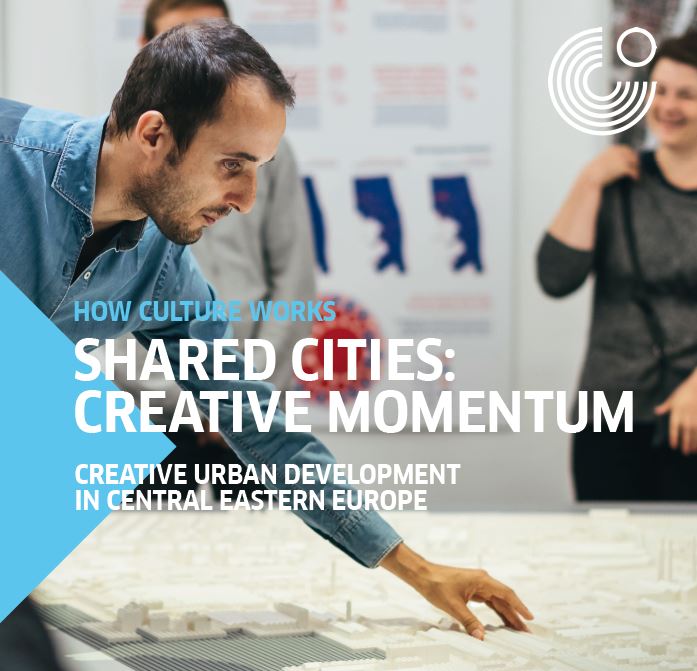
How Culture Works
"DOES EVERYTHING ALWAYS HAVE TO BE ASSESSED?" No. But when cultural work is financed with public funds, there is a necessity to evaluate.
Prague Permanent linkPublic space, in particular in cities, is an important backdrop for gatherings and everyday social life. The organization of public space and the objects in it, most notably street furniture such as benches, bus stop shelters, advertising pollards, and public restrooms, determine who will use them and help create and confirm norms about which people should use publioc space and how. In this essay, two aspects of the norming function of street furniture will be discussed: its provision by various entities (public authorities, private contractors and developers) and its physical structure and arrangement.
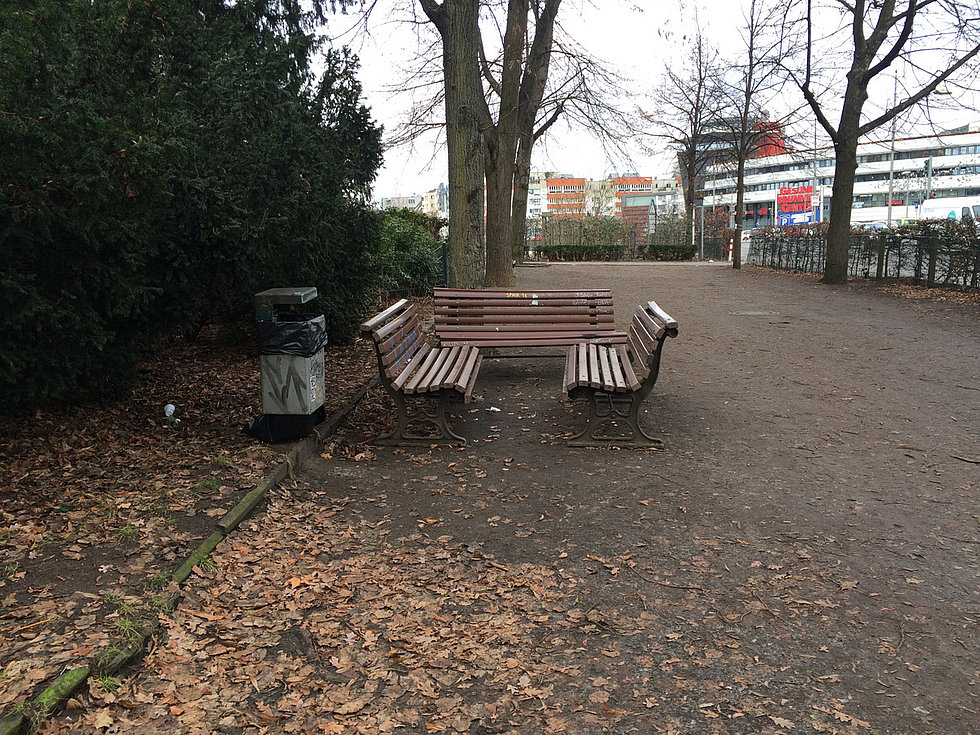
?? Mary Dellenbaugh
The author argues that when street furniture is provided to urban public space without its input, its structures create a ubiquitous backdrop for everyday life. This enforces official narratives about how and by whom public space is supposed to be used. A critical view to urban street furniture should therefore ask who gets to use, to change and to adapt public space and what other voices could be involved in the decision process surrounding which structures are built and how?
Public space, in particular in cities, serves several important social and political functions. It can be a space for gatherings from political protests to art festivals to neighborhood concerts. It also serves an important role in communication and our everyday social life, from groups of friends grilling in public parks to couples sitting on a bridge abutment watching the sun go down. How this space is physically structured helps to determine which uses are possible, but also helps to create and confirm norms about how we should move through and use space and which persons or groups are welcome. One central aspect of the organization and physical structure of public space is street furniture. Street furniture includes, but is not limited to, benches, bus stop shelters, trash cans and public toilets.
In this essay, two aspects of street furniture???s norming function will be discussed: its provision by various entities (public authorities, private contractors and developers) and its physical structure and arrangement.
Street furniture is about the passive consumption of urban space, thus the provision of street furniture defines how we can consume public space. Typically, street furniture provision occurs in a top-down (supply-driven) fashion. Three broad groups of providers exist: public authorities (funded by tax revenue), third-party contractors (funded typically by a combination of public budget allocation and advertising revenue), and developers in the context of housing and ???master-planning??? development (typically understood as part of ???landscaping??? or ???public space development???).
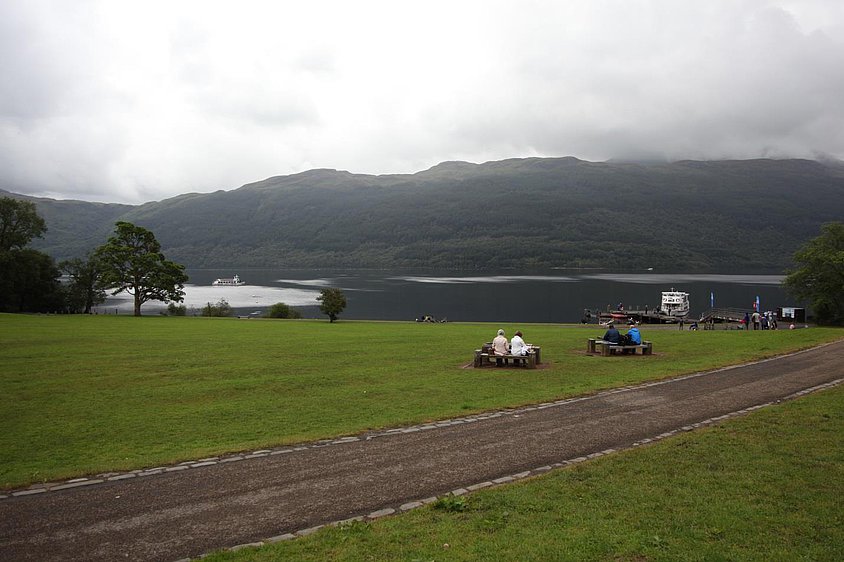
Figure 1. Picnickers at Loch Lomond in Scotland adhere to the structures provided to them ?? Mary Dellenbaugh
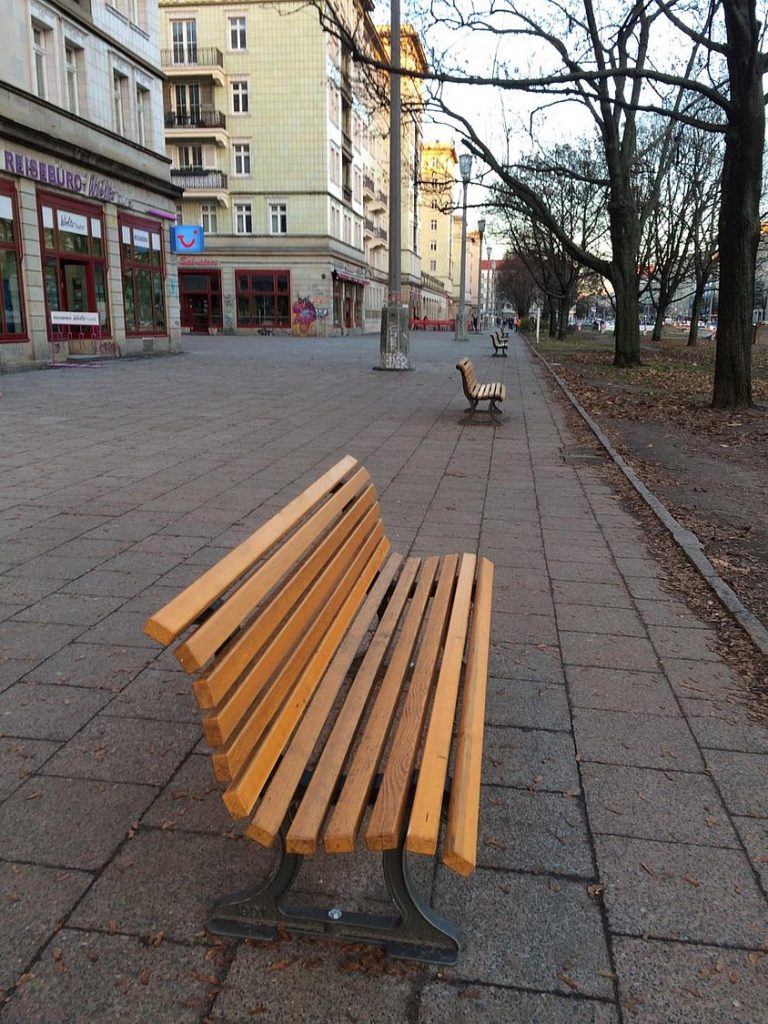
Figure 2. Supply-driven provision of benches along Frankfurter Allee ?? Mary Dellenbaugh
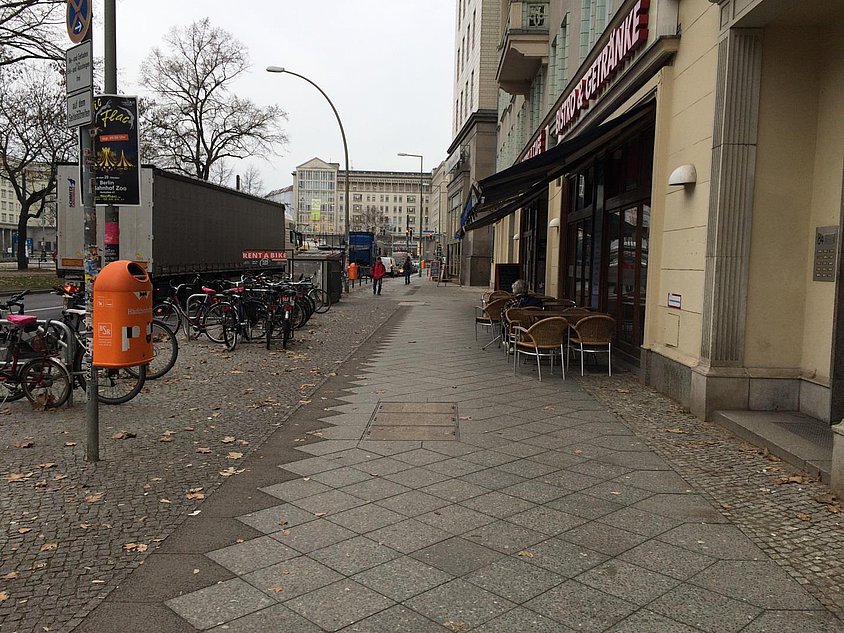
Figure 3. Just a few hundred meters away, an elderly woman with crutches sits in privately-provided seating because no bench is available ?? Mary Dellenbaugh
Public space is strongly regulated by public authorities, though this control is often subtle. The provision of street furniture creates a situation in which the responsibility for organizing and designing public space is taken out of the public???s hands. This situation lets people think that they are not permitted to act in this space while structuring the space in a way that conforms to accepted social norms (i.e. it???s acceptable to construct benches with middle bars to prevent persons from sleeping on them because homelessness is a normatively undesirable feature of metropolitan life). This process is inherently exclusionary; ???one of the consistent ways to limit the economic and political rights of groups has been to constrain social reproduction by limiting access to space.???[1] Provided structures also impose a form of ???discipline,???[2] allowing certain uses in certain places (and also conversely implicitly forbidding them in others). Public authorities enforce this discipline, for example through selective policing.[3] Thus provision of street furniture by public authorities leads to the establishment and confirmation of a) social norms (i.e. ???the way things are done???) and b) concepts about who is permitted to use public space in which ways.
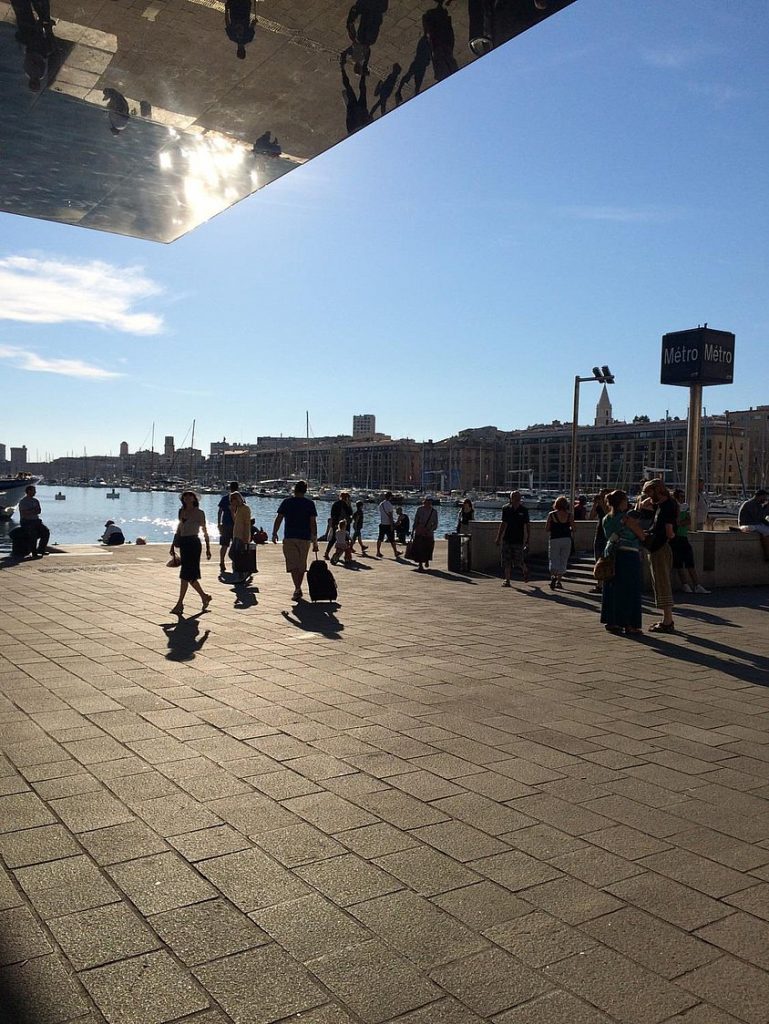
Figure 4. Marseille’s Vieux Port, a central square on the historic harbor, is devoid of benches. Instead, pedestrians sit on steps, the metro station wall, and historic pier pollards ?? Mary Dellenbaugh
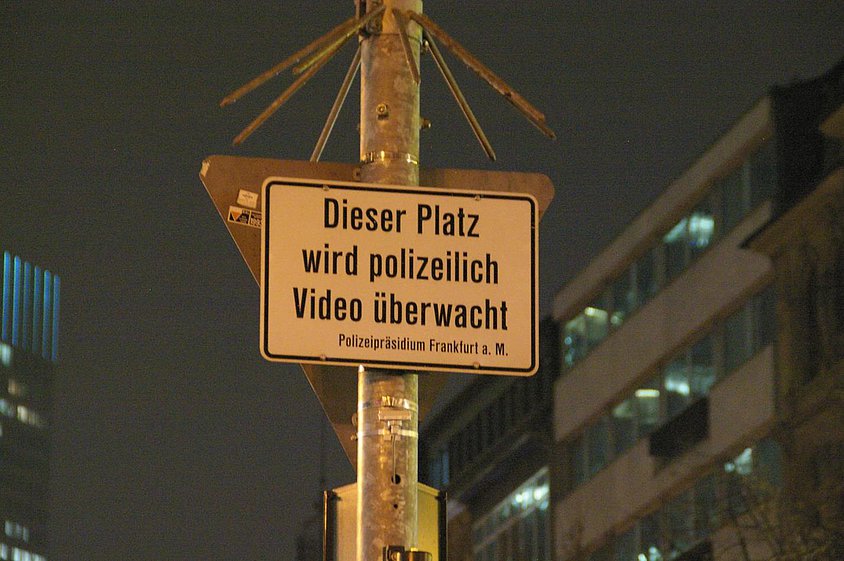
Figure 5. “This square is under police surveillance.” Frankfurt (Main) ?? Mary Dellenbaugh
The second option for the top-down provision of street furniture is by third-party contractors who have won the tendering process to provide street furniture for large cities. The revenue for the structures comes in part from the tendering process (public budgets) and in part from advertising. Advertising then becomes such an integral part of public transportation infrastructure and daily street life that it becomes invisible. As the backdrop for everyday life, these structures become banal. However, the process behind the choice of advertising and the structures themselves is often highly opaque. The banalization of these structures creates a tacit acceptance of their messages and presence until only their absence stands out. In the case of advertisement, the very banality of ubiquitous outdoor advertising desensitizes us to advertising ??? we are saturated with visual stimuli which we then ignore. We are however constantly unconsciously internalizing these norms and messages because the advertising itself has become invisible to us. The provision of street furniture by third-party contractors thus leads to the banalization of ubiquitous advertising and visual pollution in public space, as well as the normalization of the social norms and tropes reflected in the advertising displayed there. It also leads to the provision of street furniture being driven by market forces.
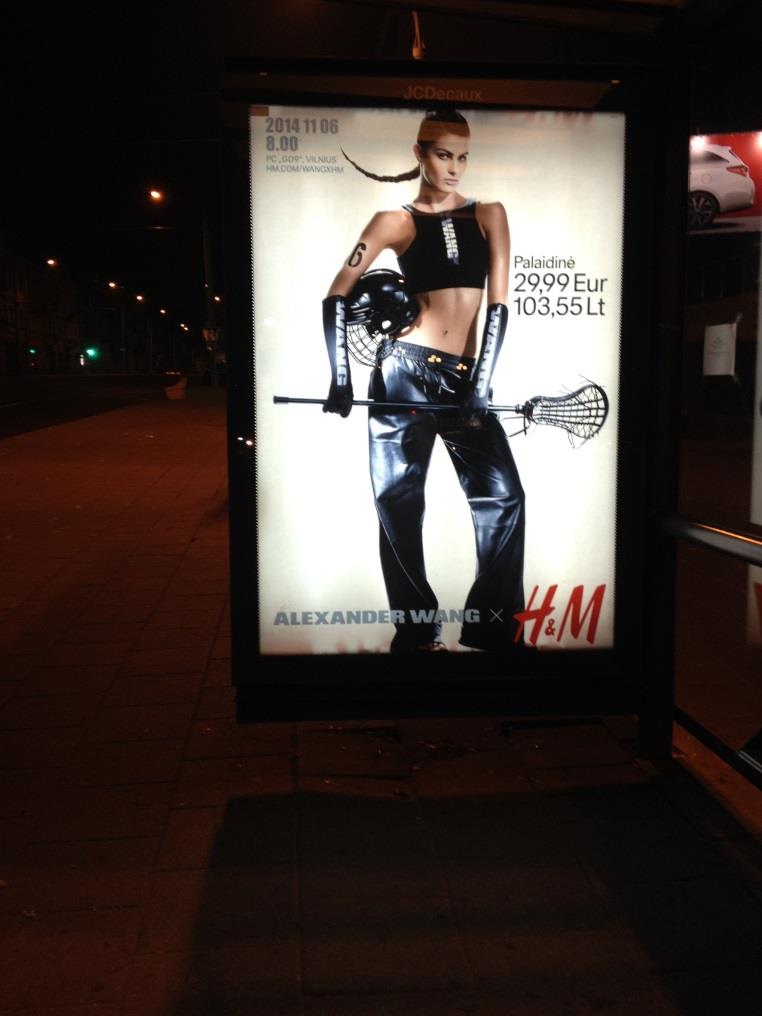
Figure 6. Western products for Eastern markets – an H&M advertisement on a bus stop shelter in central Vilnius ?? Mary Dellenbaugh
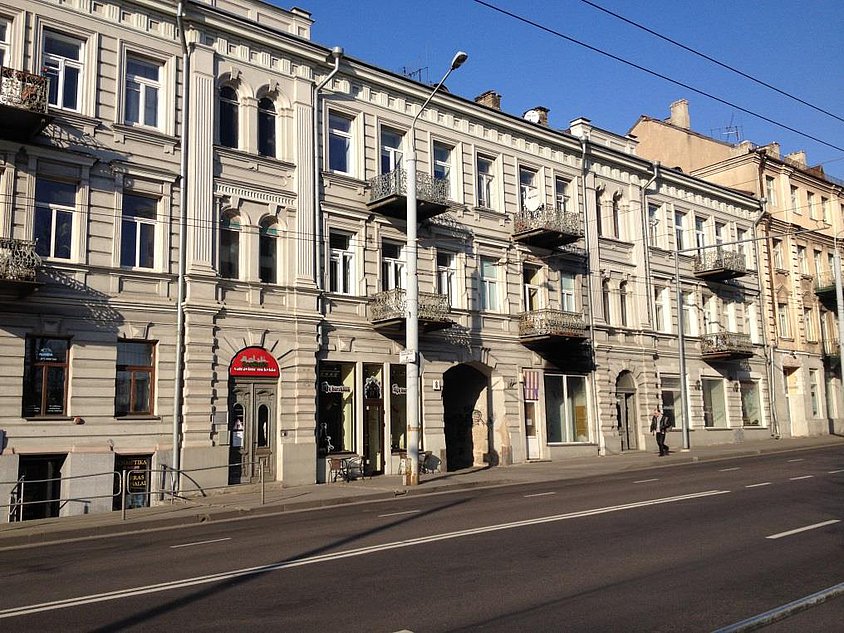
Figure 7. Meanwhile on a less-central side street there is neither advertising nor street furniture ?? Mary Dellenbaugh
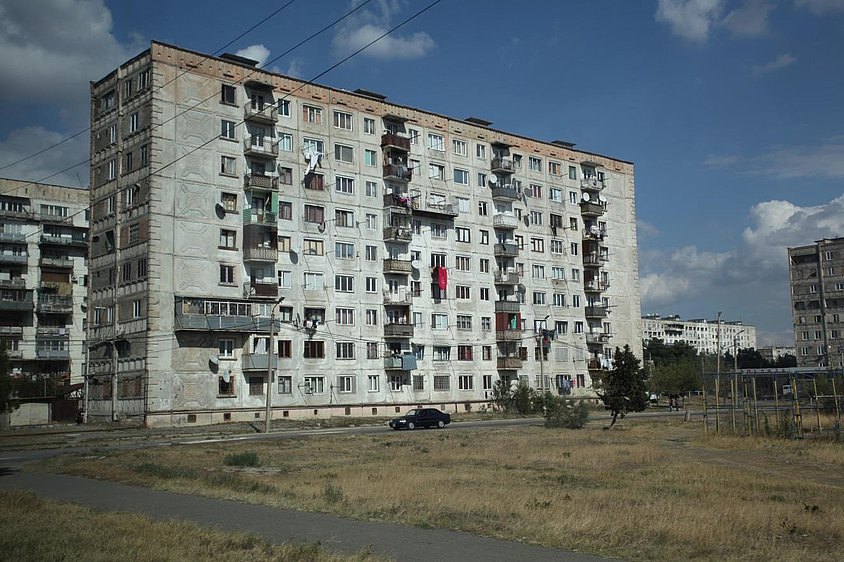
Figure 8. This poverty-stricken worker housing complex outside Tbilisi is also devoid of both advertising and street furniture ?? Mary Dellenbaugh
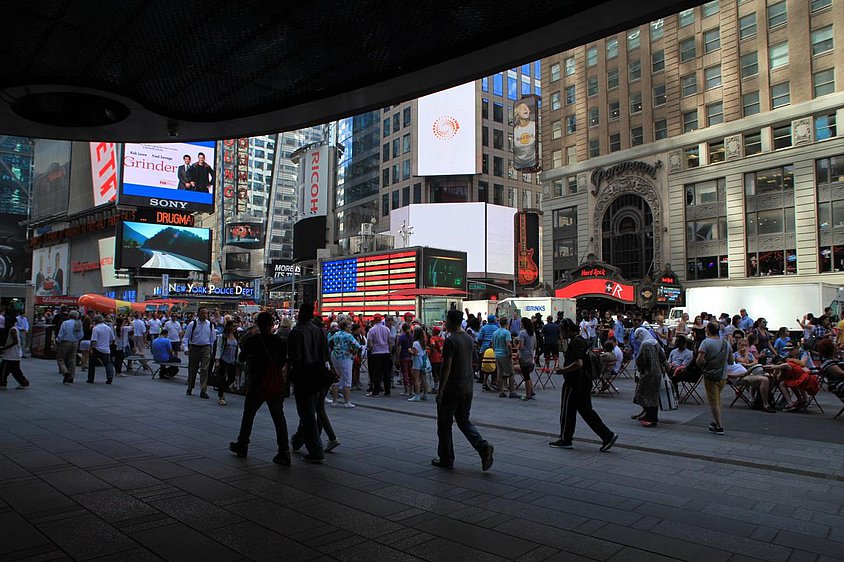
Figure 9. Advertising saturation at Times Square in New York City ?? Mary Dellenbaugh
In suburbs and ???master-planned??? developments (such as Potsdamer Platz), these structures are provided by developers. In suburbs in the United States, developers often cluster houses around ostensibly ???public??? space, where they create artificial, supply-driven seating areas which feel disconnected from the traditional tenets of centralized urban planning which they are trying to copy. These spaces are usually centrally located in a housing district, with strong visual control from the surrounding houses providing use control.[4] This social control (???self-policing???) is reinforced by self-interest ??? the immediate removal of negative or undesirable uses (loitering, lying or sleeping on benches, drinking alcohol, etc.) helps preserve the value of the surrounding private property.[5]
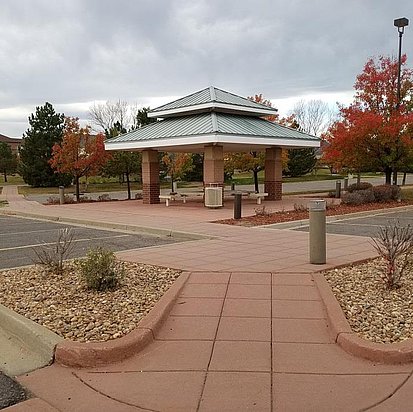
Figure 10. A pavilion in a parking lot outside Boulder provides a place to sit. The question is: for whom?
?? PJ Dellenbaugh
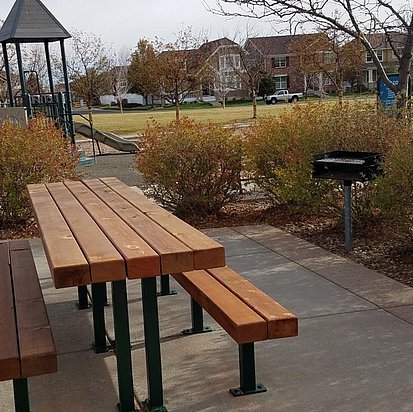
Figure 11. High visibility ensures social control by neighbors in the suburbs in the Denver/Boulder area ?? PJ Dellenbaugh

?? PJ Dellenbaugh
In addition, it???s necessary to mention the increasing tendency towards the privatization of public space. This may be in the form of transforming shopping streets (a public street with privately-owned shops) into shopping arcades or malls (enclosed areas with the structural ???feel??? of a street, but wholly privately owned and usually outfitted with a security detail). Here again the concept of control and provision by the market plays a decisive role. The provision of street furniture in these spaces serves the other commercial aspects of the space and is highly regulated.
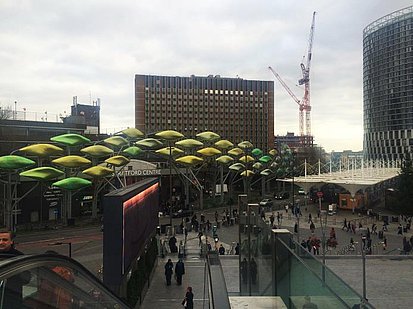
Figure 12. Stratford Centre in London provides a space that “feels” public, but is actually completely privatized ?? Mary Dellenbaugh
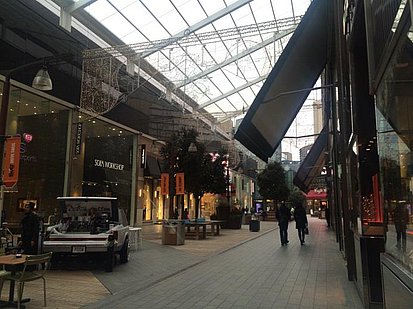
?? Mary Dellenbaugh
The second normative aspect of street furniture is the design of individual pieces and their arrangement in space. Structures can be movable or fixed (i.e. bolted down), and either designed for a wide range of uses or to discourage particular uses.
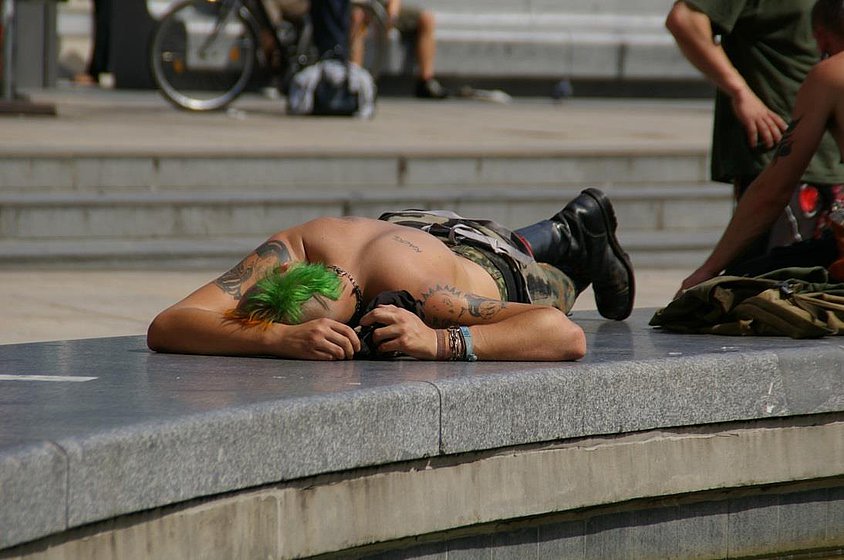
Figure 13. A man sleeps on the lip of the fountain at Alexanderplatz ?? Mary Dellenbaugh
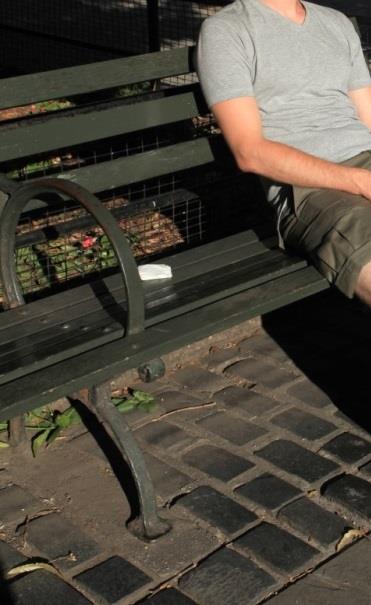
Figure 14. This bench in Stuyvesant Park in NYC has middle rails to prevent uses such as sleeping or lying ?? Mary Dellenbaugh
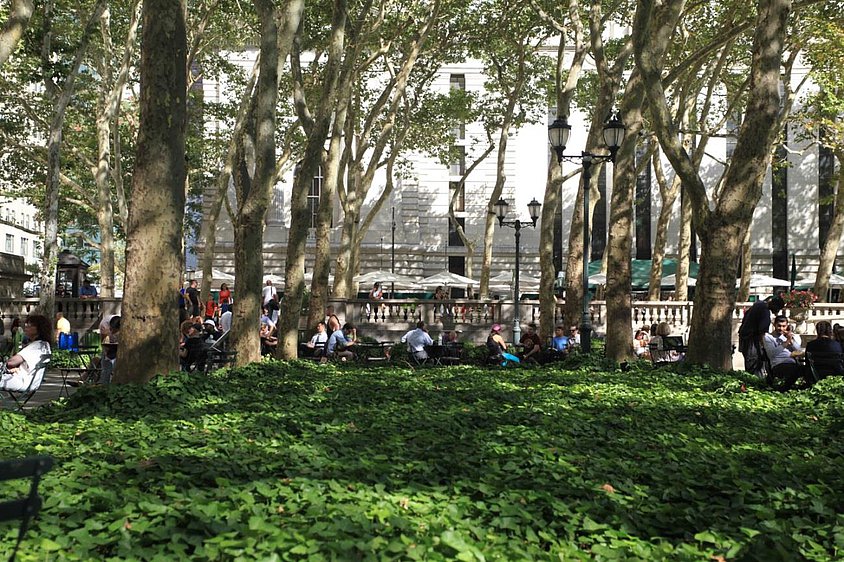
Figure 15. Bryant Park in central New York City is an excellent example of a flexible public space. Chairs and tables can be moved and rearranged to make a wide variety of seating combinations along the tree-lined paths ?? Mary Dellenbaugh
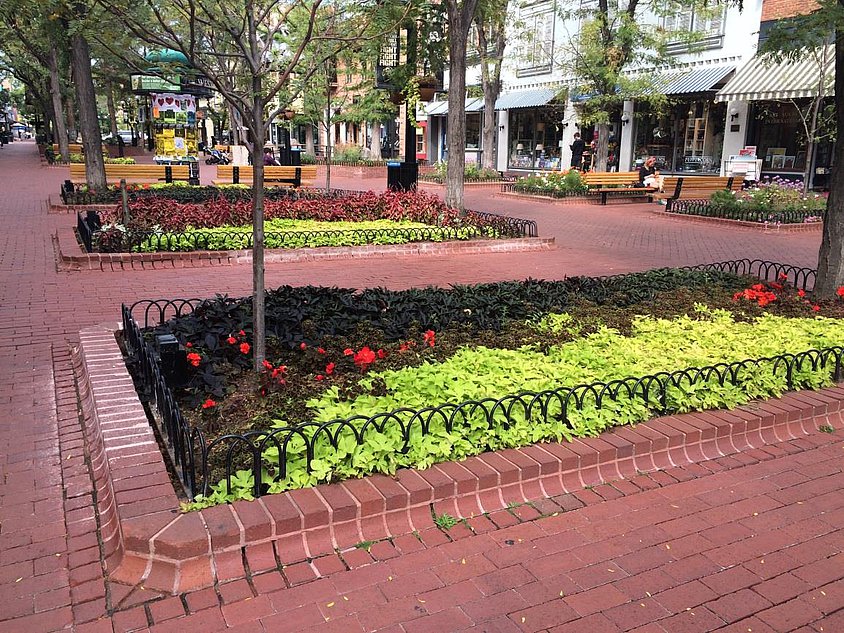
Figure 16. Communicative bench groups are placed in the highly aestheticized Pearl Street area of downtown Boulder Colorado ?? Mary Dellenbaugh
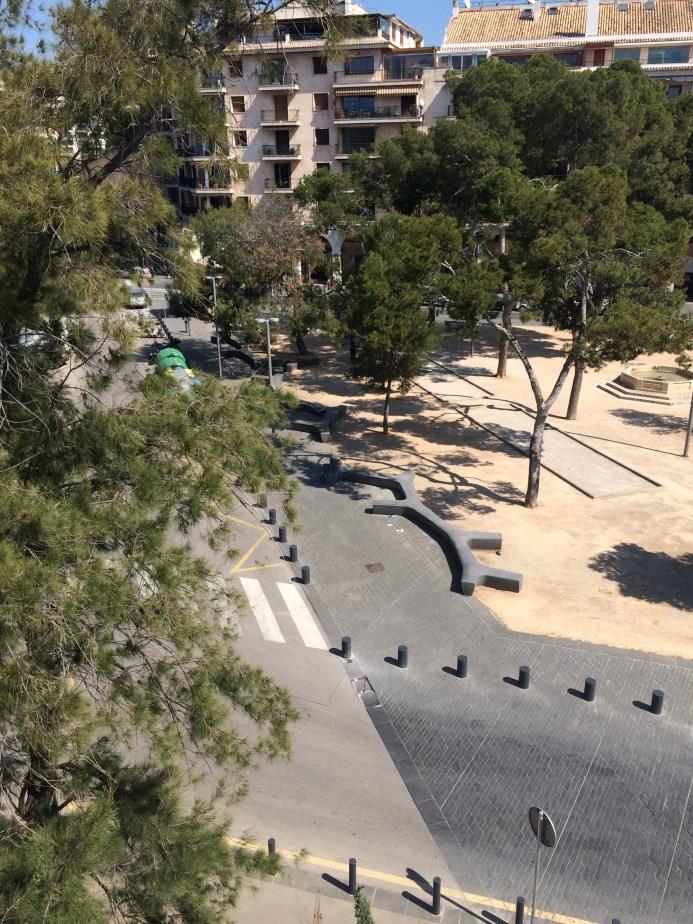
Figure 17. Flexible, hybrid forms, like this long, organically branched bench in Palma, Mallorca, create a large number of varied seating opportunities ?? Mary Dellenbaugh
Urban furniture???s design is based on expectations about body types, body measurements and physical ability. Benches, for example, are set up for specific use cases (i.e. seating capacity for three ???ideal users???) which have a limited range of body types and shapes in mind. The norming of physical objects in urban public space necessarily includes certain persons and excludes others. Seat areas which ergonomically curve down and backwards can be difficult for people with mobility issues to get out of, or be uncomfortable for persons with longer or shorter legs. Benches with chair-like seats, which curve slightly upwards on both sides to delimit individual users??? places set forth an ???ideal??? hip width. Street furniture???s design can also include or exclude those with mobility limitations. These physical norms are then reinforced as design elements are repeated throughout the city.
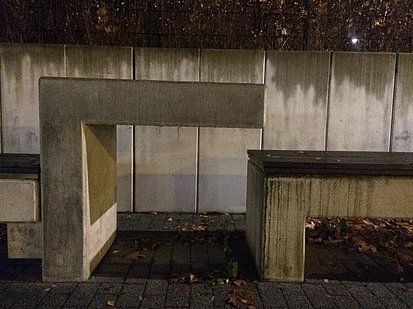
Figure 18. A bench-table combination at the Pirna central bus station in Saxony ?? Mary Dellenbaugh
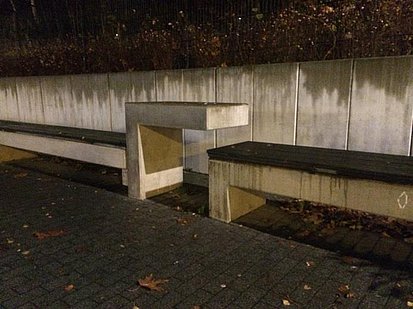
?? Mary Dellenbaugh
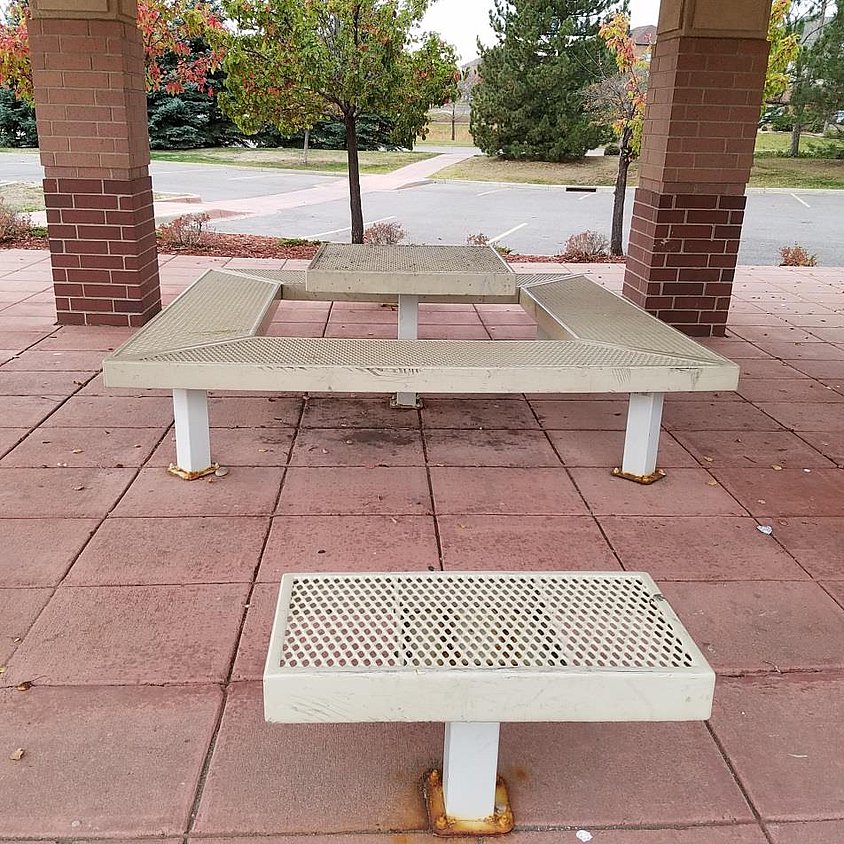
Figure 19. This picnic table in the Boulder suburbs requires one to be able-bodied enough to either step over the bench or swing one???s legs over the bench to sit facing the table, which could be an issue for those with problems in the lower back, hips or legs ?? PJ Dellenbaugh
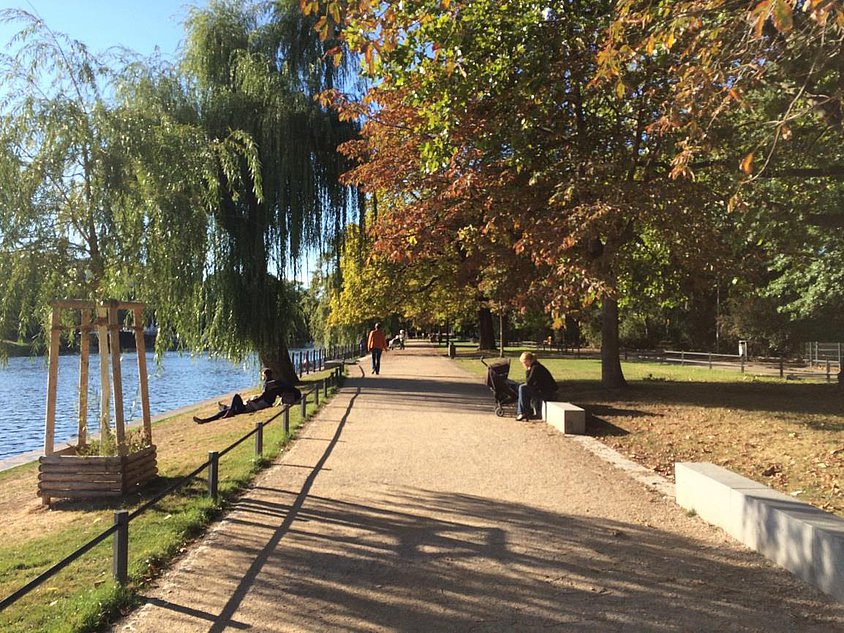
Figure 20. Flexible structures are open to a variety of uses, such as in this example of fixed seating from the Maybachufer in Berlin ?? Mary Dellenbaugh
In addition to the physical structure of individual elements, the arrangement of elements in space is also a key aspect of street furniture. Arrangements can be communicative or solitary. They can provide a place to sit while enjoying the view or while watching the kids play on the playground. The position, orientation and arrangement of benches in particular determine the orientation of bodies in space, and the feature or features of the landscape that those bodies will be oriented towards. This is particularly the case for fixed seating. The supply-driven nature of these types of street furniture means that the user is not the one who makes the decision how close he or she would like to be to any other piece of street furniture, what he or she is looking at, or any other decision in the orientation or arrangement of the street furniture that he or she is using ??? these decisions are made by the person or entity that designed or otherwise provided the street furniture.
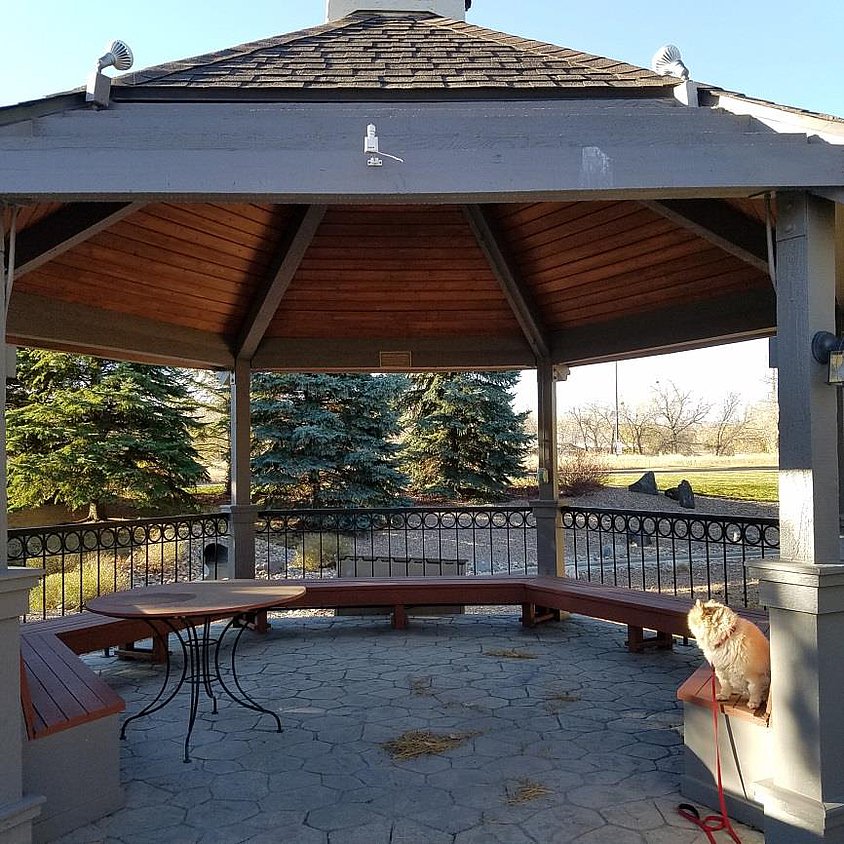
Figure 21. A bistro table has been placed in a gazebo to provide a missing function. Outside Boulder, CO. ?? PJ Dellenbaugh

Figure 22. Hacking urban furniture. These benches, which are usually arranged in an evenly-spaced row facing the same direction, have been gathered together to make a communicative group. Volkspark Humboldthain, Berlin-Wedding ?? Mary Dellenbaugh
When street furniture is ???imposed??? on the urban public, it creates a ubiquitous backdrop for everyday life which enforces official narratives about how and by whom public space is supposed to be used. A critical view to urban street furniture should ask who gets to use, change and adapt public space and to what end(s)? And why is the provision of street furniture supply-driven? What other voices could be involved in the decision process surrounding which structures are built and how? How do designers or planners know if structures are missing or enough?
The coproduction of new use opportunities in public space could be emancipatory,[6] and real-life interventions in Germany could involve groups that are typically not involved or are actively excluded from these processes (i.e. refugees, the homeless, senior citizens). The cooption of the disciplinary aspect of the organization of public space and the power to decide which uses happen in which places can/could be a powerful form of resistance against the disciplinary force of the state and the conforming power of the market.
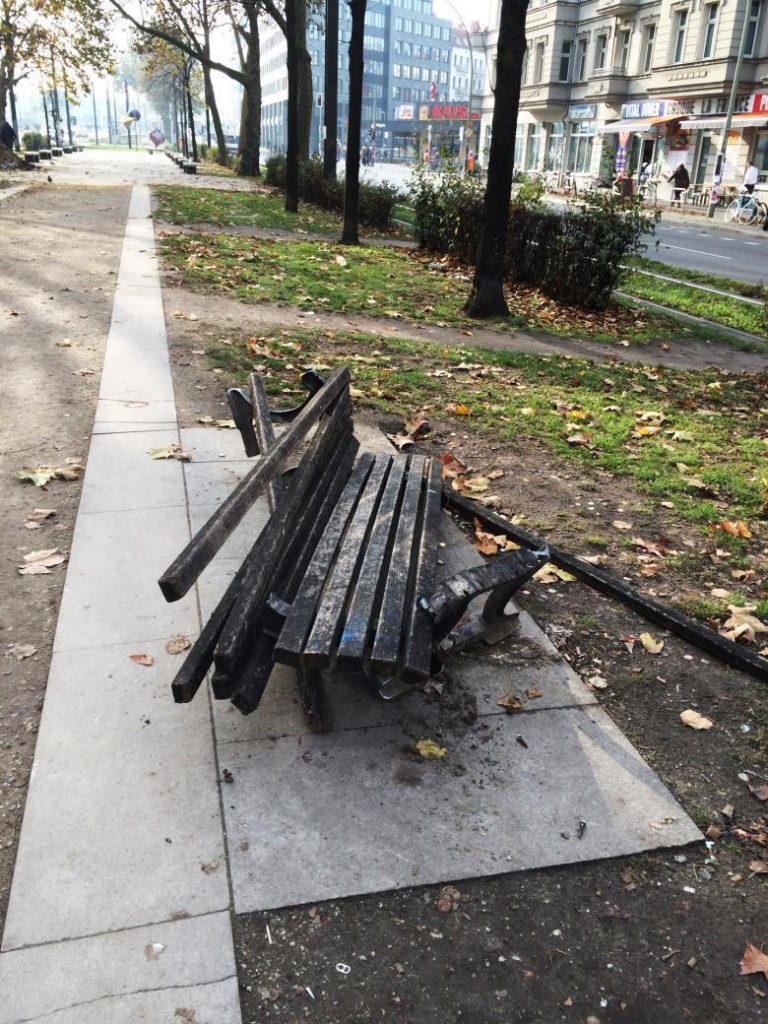
Figure 23. This bench in Warschauer Stra??e was clearly used in a way that did not conform to its structural form ?? Mary Dellenbaugh
Bourdieu, Pierre. ???Social Space and Symbolic Power.??? Sociological Theory 7, no. 1 (1989): 14???25.
De Soto, Hermine G. ???(Re) Inventing Berlin: Dialectics of Power, Symbols and Pasts, 1990???1995.??? City & Society 8, no. 1 (1996): 29???49.
Dellenbaugh, Mary. ???Landscape Changes in East Berlin after 1989: A Comprehensive Grounded Theory Analysis through Three Case Studies.??? Humboldt-Universit??t zu Berlin, 2014.
Holm, Andrej. ???Gentrification in Berlin: Neue Investitionsstrategien Und Lokale Konflikte.??? In Die Besonderheit Des St??dtischen: Entwicklungslinien Der Stadt(soziologie), edited by Heike Herrmann, Carsten Keller, Reiner Neef, and Renate Ruhne, 213???32. Wiesbaden: VS Verlag, 2011.
Jacobs, Jane. The Death and Life of Great American Cities. New York: Vintage Books, 1961.
Wilson, James Q., and George L. Kelling. ???Broken Windows.??? The Atlantic Monthly, 1982. www.manhattan-institute.org/pdf/_atlantic_monthly-broken_windows.pdf.
[1] Lefebvre, quoted in Hermine G. De Soto, ???(Re) Inventing Berlin: Dialectics of Power, Symbols and Pasts, 1990???1995,??? City & Society 8, no. 1 (1996): 33; See also Mary Dellenbaugh, ???Landscape Changes in East Berlin after 1989: A Comprehensive Grounded Theory Analysis through Three Case Studies??? (Humboldt-Universit??t zu Berlin, 2014), 85.
[2] See Pierre Bourdieu, ???Social Space and Symbolic Power,??? Sociological Theory 7, no. 1 (1989): 14???25.
[3] For example as was the case in New York under Rudy Guiliani, following the ???Broken Windows??? theory: James Q. Wilson and George L. Kelling, ???Broken Windows,??? The Atlantic Monthly, 1982, www.manhattan-institute.org/pdf/_atlantic_monthly-broken_windows.pdf.
[4] Jane Jacobs, The Death and Life of Great American Cities (New York: Vintage Books, 1961), chaps. 2???6.
[5] See Andrej Holm, ???Gentrification in Berlin: Neue Investitionsstrategien Und Lokale Konflikte,??? in Die Besonderheit Des St??dtischen: Entwicklungslinien Der Stadt(soziologie), ed. Heike Herrmann et al. (Wiesbaden: VS Verlag, 2011), 213???32.
[6] i.e. the RIght to the City
The essay was originally published on Hacking Urban Furniture website

"DOES EVERYTHING ALWAYS HAVE TO BE ASSESSED?" No. But when cultural work is financed with public funds, there is a necessity to evaluate.
Prague Permanent link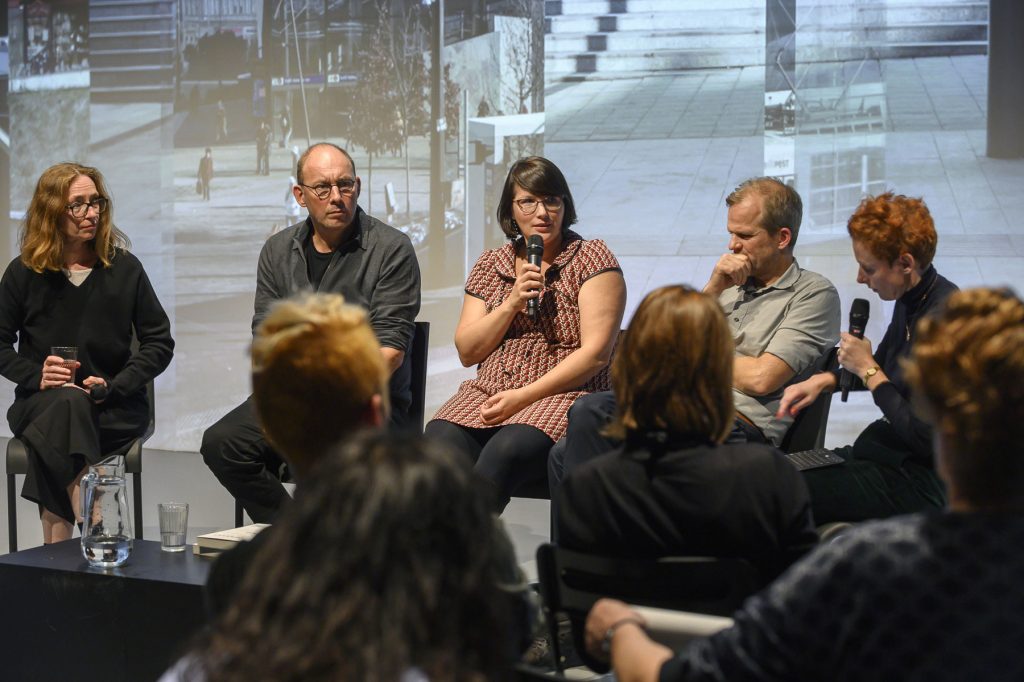
The one-day programme was based on discussion formats with renowned European architecture theorists, curators and urban researchers.
Prague Permanent link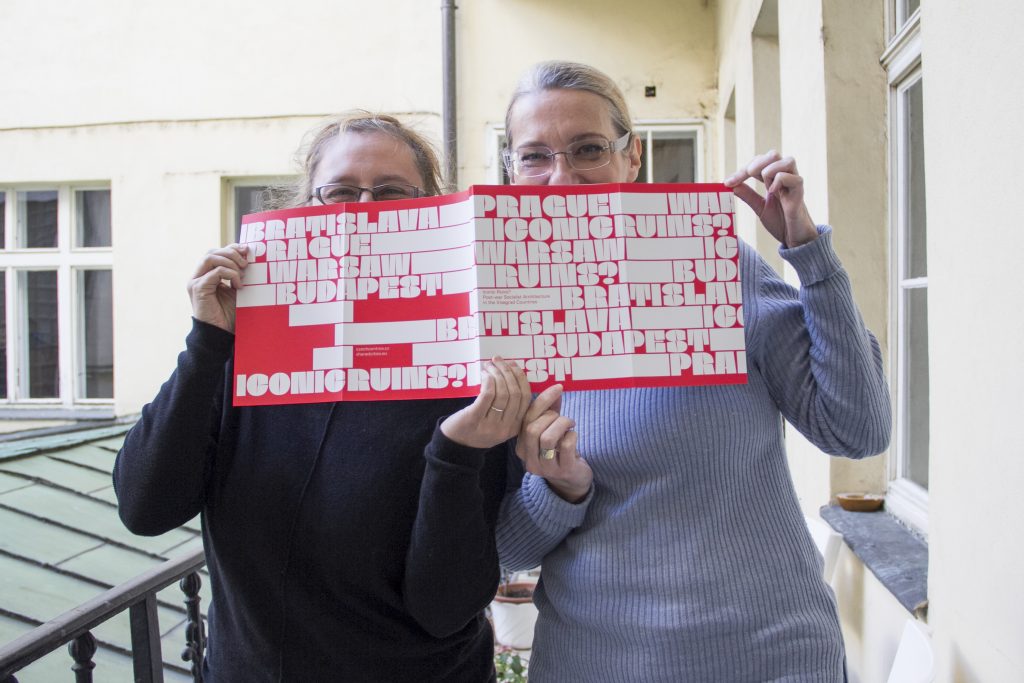
Within Shared Cities: Creative Momentum the Czech Centres realized the "Iconic Ruins?" exhibition and an economic impact evaluation of the project. How does the future of the exhibition look like? What are the benefits of having an economic analysis of the project? Find the answers in the interview with Ivana ??ern?? and Sandra Kar??csony from the Czech Centres / ??esk?? Centra in Prague, Czech Republic.
Prague Permanent link